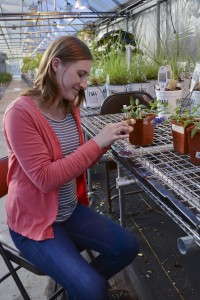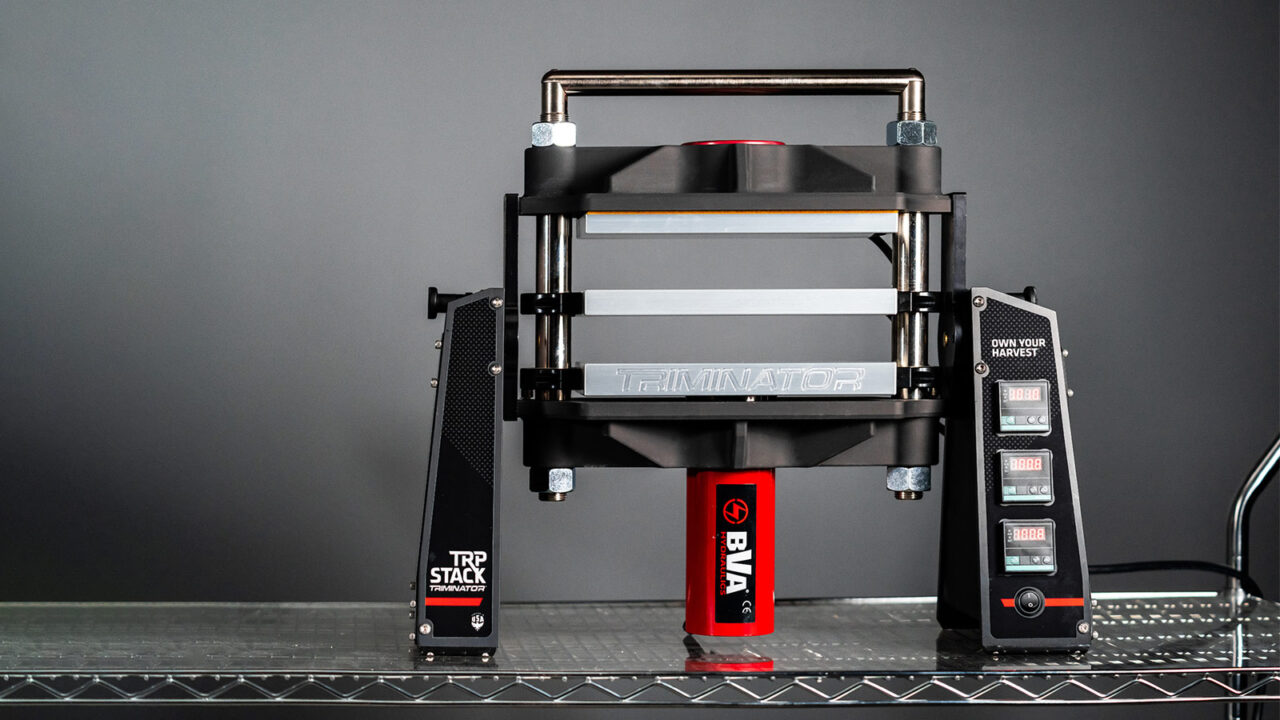Breeding Perennials For Deer And Disease Resistance, Drought Tolerance

Kelly Oates of Walters Gardens performs the delicate work of making a cross.
Perennials offer a plethora of benefits to gardeners and landscapers. Chief among them is the fact that they don’t need to be planted every year, saving both time and money. Perennials also offer a huge variety of flower colors and shapes, as well as an infinite number of foliage colors and textures.
So what then, are the disadvantages? There aren’t many, but the primary one is gardeners need to be patient, since many perennials do not bloom the first year, and may take up to three growing seasons to reach their full potential. It also means they often aren’t in bloom in the spring when consumers are making their plant purchases, so they can be overlooked at retail.
Steve Jones, president of Green Fuse Botanicals in Santa Paula, Calif., has targeted the company’s breeding efforts toward solving this problem. The company’s new line, First Light perennials, blooms the first year because they do not require vernalization.
“I was making a presentation to a key retail merchandiser and mentioned a couple of perennials we offered,” Jones says. “He asked if they could be produced for his summer program when there is great demand for perennials but few that will flower without cold treatment and throughout the summer. This started my search for perennial plant lines that would fit this criteria. First Light perennials can be sold in the spring with other perennials, and spring-planted crops can be sold in the summer.”
While the benefits to retailers and consumers are obvious, growers will like the speed to finish.
“The main production advantages for growers are that they are fast, faster, fastest to finish,” Jones says. “We also want plants to be compact enough for quart and 4-quart containers.”
Jones recommends growers consult Green Fuse’s culture sheets for production guidelines because the company offers an assortment of varieties. Perennials have much steeper cutting demand peaks, so he advises against late ordering of cuttings.
Picking Perennials For The Program
Perennials with the potential to be included in the First Light line are chosen carefully.
“Our first goal is to find the right look. Then we work on the plant’s characteristics with the breeder. My first goal is to have beautiful plants for my customer,” Jones says. He adds that some perennials don’t possess the qualities for which his breeders are looking. “In some cases, we have to skip major perennial classes,” he says.
“We do extensive trialing in our greenhouses in Santa Paula to evaluate whether the plant will have the look we want. We can also test disease pressure at that site. Our relationship with Michell’s, our distribution company in the U.S., allows us testing grounds in a variety of USDA cold hardiness zones. We use all this information to make our picks.”
[blackoutgallery id=”57011″]
Meeting Consumer’s Demands
Walters Gardens in Zeeland, Mich., is also breeding perennials that bloom earlier or without vernalization and have a long season of interest. “Even though we are a wholesale company, it is ultimately consumer preference that drives demand for our perennials,” says Susan Martin, director of marketing communications for Walters Gardens.
Martin sees other trends as well. “In the interest of being “green” and providing a healthy environment for their families, parents are looking to plant things that thrive naturally in their landscapes,” she says. “They want plants that don’t have to be treated with chemicals to stay healthy, and some have interests in native plants.”
New varieties continue to be very popular and keep sales strong at all levels, Martin says. “Our new items are typically the first to sell out, and consumers are looking for them at their local garden centers,” she says. “The more progressive growers and garden centers are seeing sales increases, while those whose inventory remains stagnant are not.”
What’s Old Is New Again
Martin says today’s consumers are looking for low-maintenance, drought-tolerant, deer- and disease-resistant perennials. In addition, there is an increasing interest in the plants their grandparents grew.
“Updated versions of heirloom perennials like lavender, hollyhocks and pinks are popular,” Martin says. “Everything vintage is cool these days, even in the garden, and today’s hybrids are generally lower maintenance and showier bloomers.”
With these trends in mind, Martin says Walters looks for gaps where there is room in particular perennial genera with a more limited cultivar selection, such as monarda, baptisia, veronica, hibiscus and leucanthemum. “Aside from all of that, however, we are a company of plant lovers who are always looking for the next cutting-edge new plant,” she says.
Like at Green Fuse, once a cultivar is ready for introduction, it has gone through and extensive selection and trialing process. Some varieties are marketed under the Walters name. Others are trialed and sold under the Proven Winners Perennials brand.
“It generally takes us four to 15 years to hybridize, trial, produce and introduce a new perennial,” Martin says. Once the crosses have been made and the seedlings grown out, they go through an extensive trialing process. Stages of trialing include selecting the best seedlings from the batch of potentially hundreds, or even thousands, of plants and testing them against our own hybrids and other named varieties. We also test them in production before they are introduced. By the time we advertise our new varieties in our catalog, we are confident that they are solid, marketable plants. Our overall focus is to produce new varieties with which our customers and consumers will be successful.”










